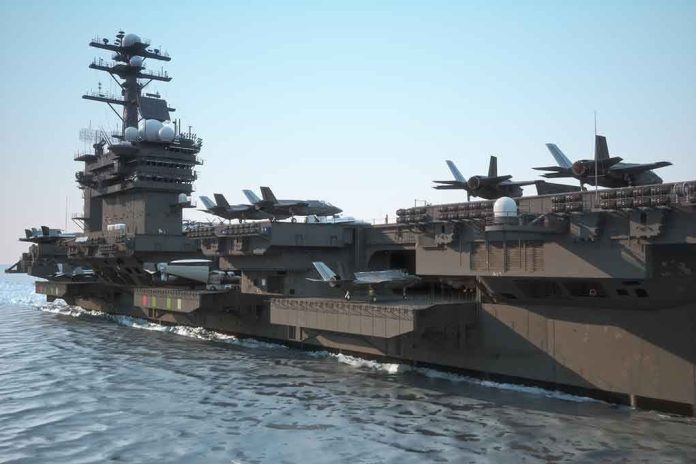
President Trump’s upcoming visit to Tokyo will formalize a historic shipbuilding alliance designed to break China’s stranglehold on global maritime production and restore American naval supremacy.
Story Highlights
- Japan commits $6.5 billion by 2035 to revitalize U.S. shipbuilding capabilities
- Strategic pact directly counters China’s dominance in global shipbuilding markets
- Agreement standardizes ship designs and creates joint production facilities
- Partnership strengthens U.S. Navy repair capabilities using Japanese expertise
Trump Administration Secures Strategic Maritime Partnership
President Trump will sign a memorandum of understanding with Japan on October 27, 2025, establishing unprecedented shipbuilding cooperation between the allied nations. The agreement represents part of Japan’s massive $550 billion investment package in American industry, with Japanese shipbuilders specifically committing $2.3 billion immediately and targeting $6.5 billion by 2035. This partnership directly addresses America’s critical shipbuilding deficit, where domestic production accounts for merely 0.2% of global output while China dominates through state-backed subsidies.
The Trump administration has positioned this alliance as essential for national security, recognizing shipbuilding as a strategic industry vital to American maritime autonomy. Japanese government officials have labeled their shipbuilding sector as equally strategic, creating a foundation for unprecedented cooperation. The Maritime Policy Research Center emphasizes that modern shipbuilding represents “as much about sustaining maritime autonomy as it is about industrial modernization,” highlighting the dual economic and security benefits of this partnership.
Countering Chinese Maritime Hegemony Through Allied Cooperation
China’s state-backed shipyards have systematically captured global shipbuilding markets, creating dangerous dependencies for American naval and commercial operations. The Japan-U.S. pact directly challenges this dominance by establishing alternative supply chains and production capabilities outside Chinese control. Both nations recognize that China’s consolidation of shipbuilding capacity poses long-term threats to their maritime security and economic independence, making this partnership a cornerstone of Indo-Pacific strategy.
The agreement builds upon successful precedents like the ICE Pact involving the United States, Canada, and Finland for icebreaker production. This demonstrates how allied cooperation can effectively counter authoritarian regimes’ industrial advantages through democratic partnerships. The timing coincides with expanding Sino-Russian collaboration in Arctic and Indo-Pacific regions, making allied shipbuilding cooperation increasingly urgent for maintaining Western maritime superiority and protecting sea lanes critical to global commerce.
Advanced Technology Integration and Industrial Modernization
The partnership prioritizes artificial intelligence applications in ship design and maintenance, positioning American and Japanese shipyards at the forefront of maritime technology. Joint investment will modernize facilities, standardize ship designs and components, and create shared repair capabilities for both naval and commercial vessels. Mitsubishi Heavy Industries already demonstrated this cooperation’s potential by completing major U.S. Navy maintenance contracts in May 2025, proving Japanese technical expertise can enhance American naval readiness.
The formation of a dedicated Japan-U.S. shipbuilding working group ensures coordinated technology sharing and investment strategies. This cooperation extends beyond immediate production needs to establish new global benchmarks for ship standardization and advanced manufacturing processes. The partnership creates resilient supply chains independent of Chinese manipulation, protecting both nations from economic coercion while strengthening their combined industrial capacity for future challenges in an increasingly contested maritime environment.
Sources:
Japan and U.S. Advance Shipbuilding Cooperation with Major Investment and Technology Pact
Report: Japan and U.S. to Sign Memorandum on Shipbuilding Cooperation
SHIPS for America Act Can Help Boost Japan-US Arctic Shipbuilding Cooperation
Maritime Strategy Is Built in Shipyards: Partner with Allies to Revitalize the Industrial Base





